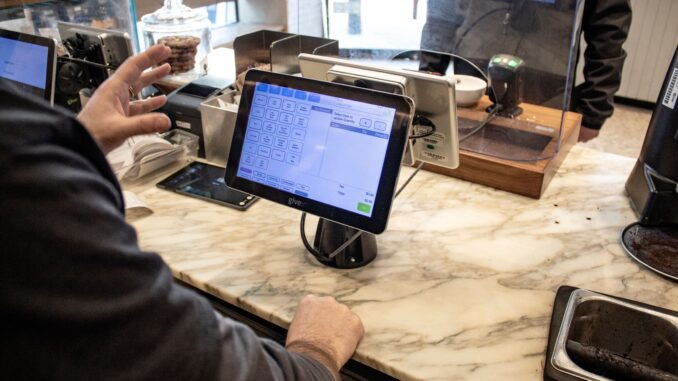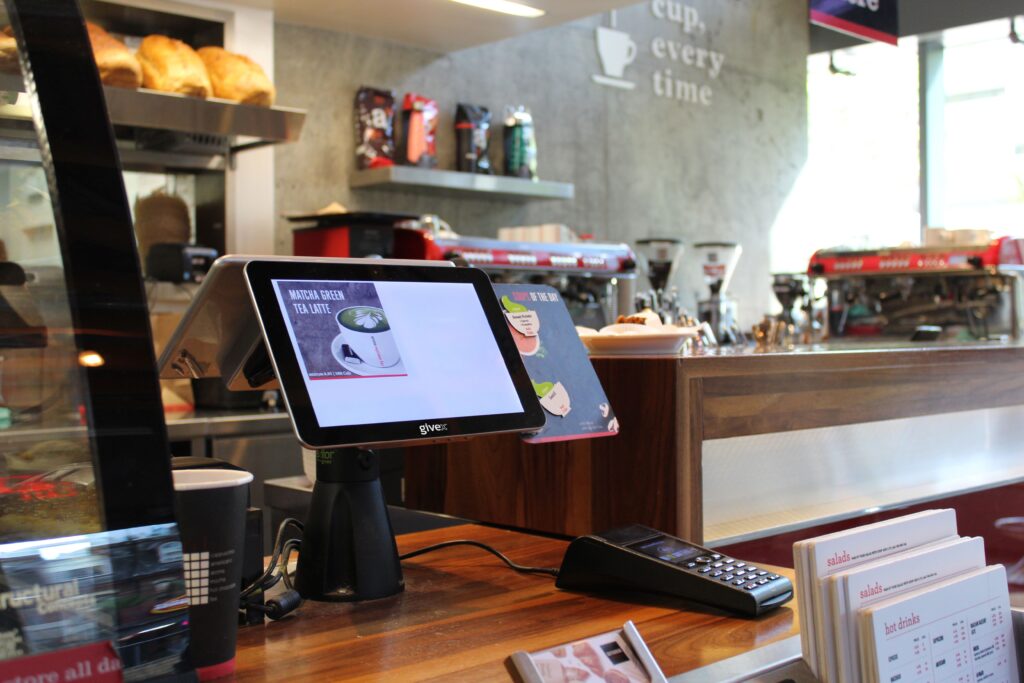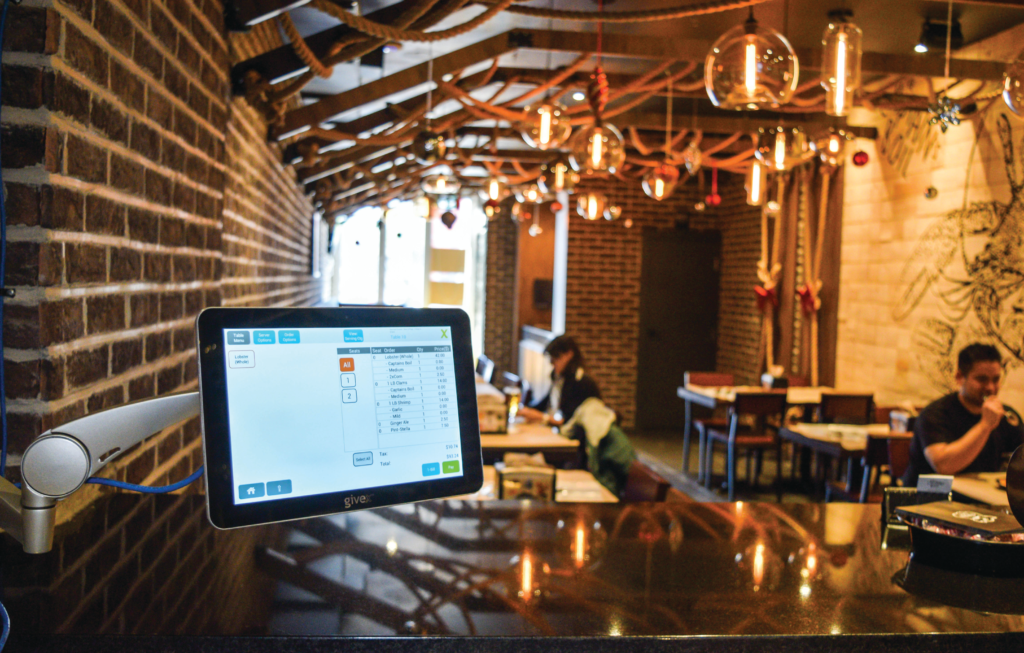
By Mo Chaar, Chief Commercial Officer, Givex - 4.29.2024
Following the aftermath of the COVID-19 pandemic, innovation within the restaurant industry has largely been defined by one key area: technology. This period of accelerated digital transformation has underscored the importance of adopting new technologies to enhance operational efficiency, improve customer experiences and drive loyalty. According to a 2023 survey by TD Bank, 38% of restaurants are planning to invest in technology such as a new point-of-sale system or other in-store tech.
But with so much changing at such a rapid pace, it can be difficult for restaurant operators to keep up with the latest trends. Here are some of the key ways technological innovations are revolutionizing restaurant operations.
The Evolutionary Impact of POS Technology
 The adoption of omnichannel POS platforms has transformed how restaurants operate. Instead of just handling transactions, these systems now play a crucial role in strategic decision-making and customer interaction. A significant change is the use of POS data to analyze and predict customer preferences, for example, allowing restaurants to offer personalized services.
The adoption of omnichannel POS platforms has transformed how restaurants operate. Instead of just handling transactions, these systems now play a crucial role in strategic decision-making and customer interaction. A significant change is the use of POS data to analyze and predict customer preferences, for example, allowing restaurants to offer personalized services.
According to a study by Starfleet Research, 84% of full-service restaurants, as well as 72% of quick-service and fast-casual restaurants, say they saw “significant” improvement in revenue performance after investing in next-generation restaurant management and POS systems.
This trend goes beyond just gathering data. Modern POS systems also enhance the dining experience by connecting with online ordering platforms, reservation systems and inventory management tools. These integrations improve operational efficiency and reduce human error, leading to a smoother experience for customers.
Similarly, with ongoing labor shortages — there are nearly 1 million job openings in the food service space as of February 2024 — restaurant operators can leverage their POS to improve employee retention in the short and long term. Tech can result in happier employees by eliminating repetitive tasks and reducing error rates which leads to higher guest satisfaction, bigger tips and faster order entry.
Cultivating Customer Loyalty Through Technology
While customer loyalty has always been essential in the restaurant industry, today it is a particularly precious commodity. The Pareto Principle, which emphasizes the frequency of an 80/20 distribution, shows that 80% of a company’s profits come from just 20% of its guests. According to Bain & Company research, a 5% increase in customer retention can increase profits by up to 75%.
Innovations in POS technology have paved the way for sophisticated loyalty programs and gift card solutions that cater to the individual preferences of customers. Digital gift cards in particular have become a go-to payment solution within these loyalty platforms, thanks to the convenience of automatic reloads and top-ups. The introduction of these digital gift cards and loyalty points has not only simplified the process of reward redemption, but also provided restaurants with valuable data to further refine their customer engagement strategies in the future.
A McKinsey study shows that 71% of consumers expect companies to deliver personalized interactions today, and data-driven POS insights allow restaurants to tailor their marketing efforts, offering targeted rewards that meet that demand.
The Transformative Power of AI in Restaurants
Another inescapable trend within the restaurant industry is artificial intelligence (AI), which is being utilized across the board to enhance customer service and optimize back-of-house operations. According to Polaris Market Research, the global service robotics market — only one facet of AI in restaurant tech — was valued at $32.11 billion in 2022 and is expected to grow to $225.56 billion by 2032.
 AI-powered chatbots and voice assistants, for example, are redefining the ordering process, offering a more interactive and efficient customer experience. Additionally, like POS data, AI-driven analytics can predict customer preferences and buying behaviors, enabling restaurants to tailor their menus and promotions accordingly.
AI-powered chatbots and voice assistants, for example, are redefining the ordering process, offering a more interactive and efficient customer experience. Additionally, like POS data, AI-driven analytics can predict customer preferences and buying behaviors, enabling restaurants to tailor their menus and promotions accordingly.
On the operational side, AI technologies are instrumental in streamlining inventory management, reducing waste and forecasting demand with greater accuracy. A study by McKinsey suggests that AI can reduce forecasting errors by up to 50%, significantly improving inventory management and reducing overstock and stockouts.
Furthermore, AI’s role in employee scheduling and task management helps align staffing levels with customer demand, enhancing service quality while optimizing labor costs.
Embracing the Future: The Importance of a Forward-Thinking Strategy
Overall, technology’s role in the restaurant world is evolving and operators that are willing to get on board are seeing tangible benefits: they’re running smoother, their customers are happier and their profits are up. As we move forward, making the most out of a restaurant tech stack — whether it be POS systems, AI or loyalty programs — means being willing to learn and adapt continuously. Technology keeps moving forward, and for restaurants ready to jump in, there’s a world of opportunity waiting.
 Since joining Givex in 2007, Mo Chaar has helped the company expand its North American footprint. He began his tenure as a Business DevelopmentManager before becoming Vice President of Sales for North America, and then moved to his current role of Chief Commercial Officer. In this role, Chaar oversees commercial strategy and development worldwide as well as managing the sales teams within North America. His experience in gift card, loyalty and POS has played a pivotal role in the success of some of Givex’s largest partners. As Givex continues to expand on a global level, with a wide array of product offerings, there is a need to keep the teams aligned on pricing, product and sales approach. As the CCO, Chaar continues to manage the North American Sales and Corporate Account Management teams and also takes on the added duties of supporting the Global Managing Directors in ensuring that all functions of the organization are aligned to meet our strategic commercial objectives.
Since joining Givex in 2007, Mo Chaar has helped the company expand its North American footprint. He began his tenure as a Business DevelopmentManager before becoming Vice President of Sales for North America, and then moved to his current role of Chief Commercial Officer. In this role, Chaar oversees commercial strategy and development worldwide as well as managing the sales teams within North America. His experience in gift card, loyalty and POS has played a pivotal role in the success of some of Givex’s largest partners. As Givex continues to expand on a global level, with a wide array of product offerings, there is a need to keep the teams aligned on pricing, product and sales approach. As the CCO, Chaar continues to manage the North American Sales and Corporate Account Management teams and also takes on the added duties of supporting the Global Managing Directors in ensuring that all functions of the organization are aligned to meet our strategic commercial objectives.
Are you an industry thought leader with a point of view on restaurant technology that you would like to share with our readers? If so, we invite you to review our editorial guidelines and submit your article for publishing consideration.

